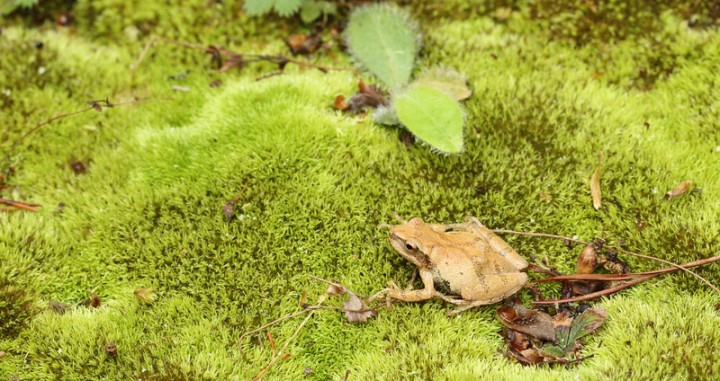The most vivid and wonderful April sign of all the good things to come is the sound of peepers (little frogs), pronounced “peepahs” here in New England.

Welcome to the April 2004 edition of “Jud’s New England Journal,” the rather curious monthly musings of Judson Hale, the Editor-in-Chief of Yankee Magazine
, published since 1935 in Dublin, NH.About “Peepahs” and Peas
Although March is my favorite month of the year — I’m told I’m in the minority on that opinion — April comes in a close second. By then the “promises” of March — that aspect of the month I so enjoy thinking about — have begun to change into a myriad of wonderful spring realities but, nonetheless, it’s still within that time of year when we can take comfort in the fact things are going to get better and better and better. (For a while.)
For me, the most vivid and wonderful April sign of all the good things to come is the sound of peepers (little frogs), pronounced
peepahs here in New England even by those who ordinarily utilize their
r’s.
It goes without saying that to be the
first one in your neighborhood to hear the first of the season “peeps” on an April evening is an honor. The only trouble is that no one will acknowledge anybody else as
being the first.
“Heard a few peepahs this evening in the swamp back of my house here in Spofford,” a voice called into WKNE-FM in Keene, New Hampshire, one early April evening as I was returning home from Vermont, listening to my car radio.
“We have peepahs over here in Westmoreland this evening, too,” another man telephoned several minutes later.
“Out here in Acworth,” a woman’s voice came on the air, “we heard peepahs last Sunday.”
The announcer then invited anyone who’d heard peepahs earlier than
that to give a call — and some half-dozen listeners did. Quite an argument ensued when someone said that the peepahs in his town had been in full swing “for over a week.” Finally, the original caller form Spofford telephoned back to say that the peepahs he was hearing there that evening were the first “group” of peepahs he’d heard that season, but that he “thought” he’d heard a “single peepah” one evening almost two weeks before. At that point, the announcer began to play some music.
During this same time in April, there’s a great deal of private, anguished deliberation over whether or not to plant the peas. “In by Patriots’ Day, out by the Fourth of July,” is the saying. Actually, it doesn’t matter when they are planted just as long as they’re ready to pick by the Fourth of July dinner. That
is important. So the decision isn’t taken lightly — and it’s delicate. Plant them too early and the seeds will just rot in the too-cold ground. A late snowstorm — “poor man’s fertilizer” — will not necessarily hurt them. But a lengthy cold rainy spell will. On the other hand, if one becomes overly cautious and waits too long, there’ll be canned or frozen peas with the salmon that Fourth of July and those cannot ever be passed off as fresh.
So what can we look forward to after the peepahs and the peas? Well, warm weather, lilacs, and lots of nice things. But remember, there aren’t any bugs in March … nor during the major part of April, either.




